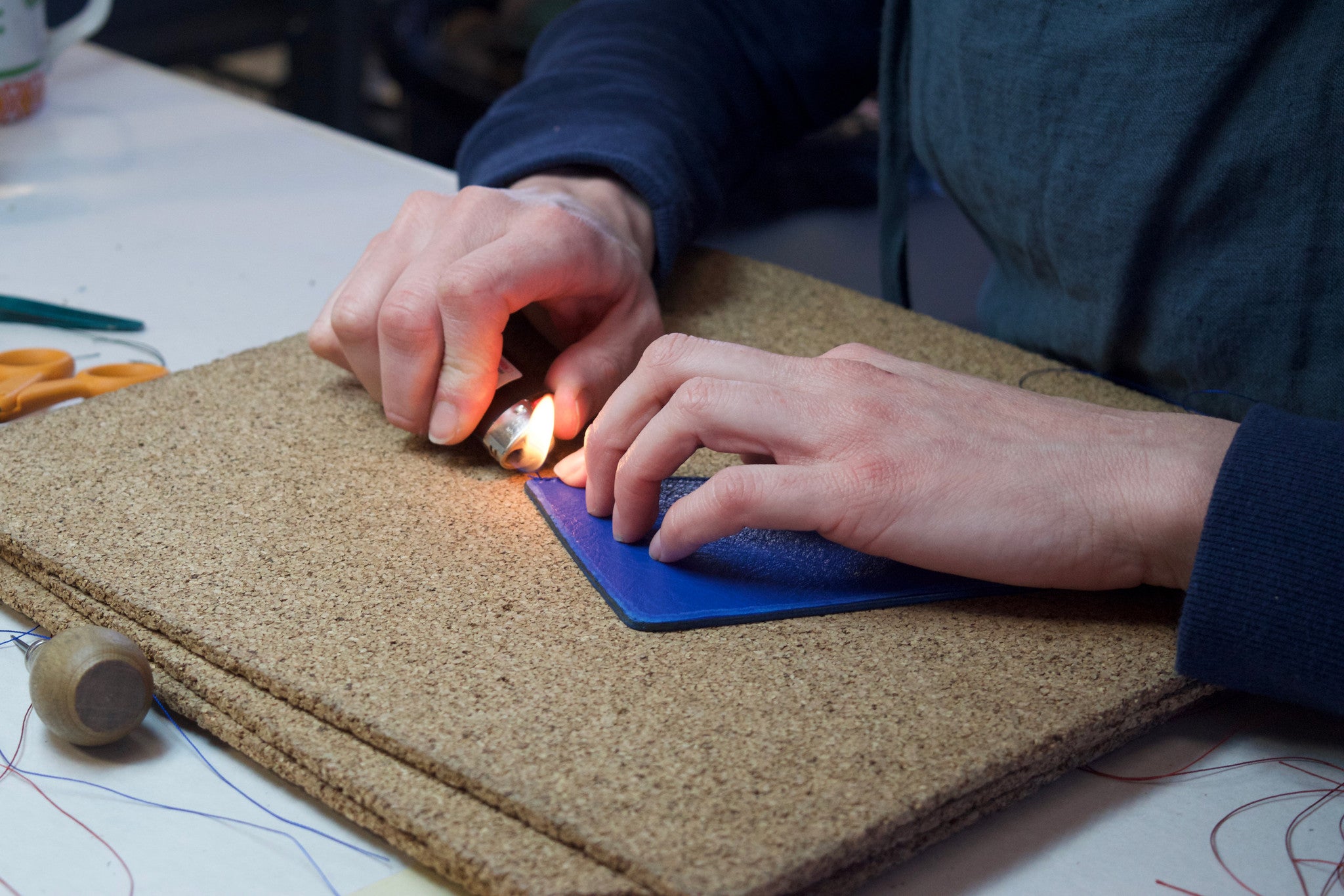
The Modus Operandi: Turning and Burning the Tripp II Handbag
The pieces of this round of Tripp II handbags have all been stitched, and today, they’re being turned and burned. With around 50 hand-tied knots comprising the parts of one bag, there’s a lot of work to do here, but this is one step we’d never dream of skipping. Turning and burning adds strength and longevity to every bag- and besides, it just looks better when thread ends don’t come loose over time.

Every one of these ends is tied in a tight square knot before being heated with a flame. We use nylon thread, which melts rather than burning like cotton does, so that the end can subsequently be pushed back into its hole and seal as it cools. A bone folder is used to push the leather back over the hole, and what results is a knot that’s completely secured. It takes a lot of work to master this step given that it’s so precise, but at the end of the day, it’s all worth it.

There are three kinds of turn-and-burns: invisible, visible, and edge wraps. The first refers to knots on a part of the bag that will be attached to another and never be seen by the naked eye- usually an interior lining or laminated layer. It then follows that a visible one will end up on a bag’s exterior, meaning that the turn-and-burn execution must be absolutely perfect. An edge wrap is the strongest of all because it involves five reinforcing threads instead of just one, making the parts of a bag most subject to stress (corners and edges) ultra-resilient. Excellence fully attained, these Tripp II pieces are now just about ready to be stitched together.